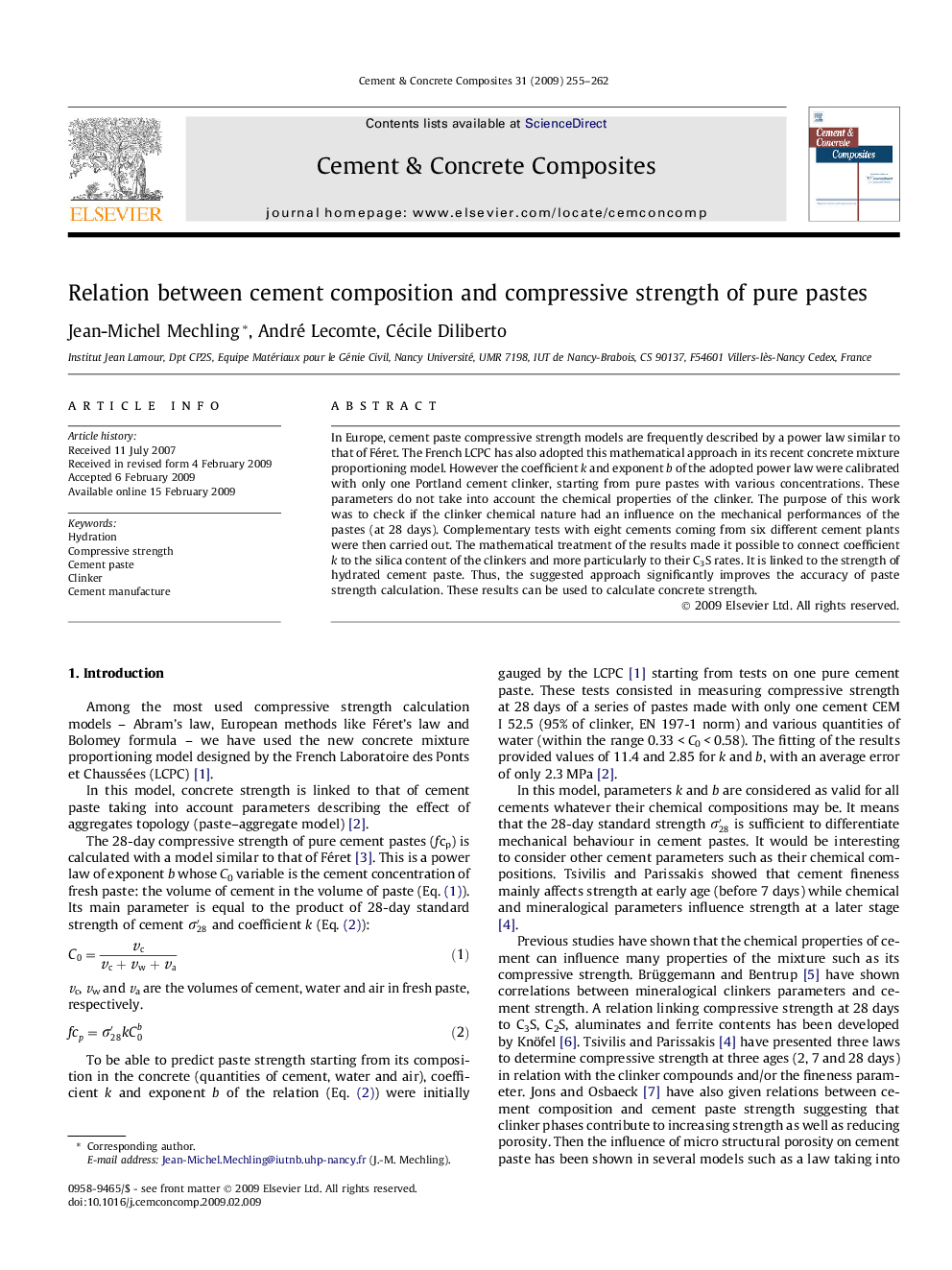| Article ID | Journal | Published Year | Pages | File Type |
|---|---|---|---|---|
| 1455512 | Cement and Concrete Composites | 2009 | 8 Pages |
In Europe, cement paste compressive strength models are frequently described by a power law similar to that of Féret. The French LCPC has also adopted this mathematical approach in its recent concrete mixture proportioning model. However the coefficient k and exponent b of the adopted power law were calibrated with only one Portland cement clinker, starting from pure pastes with various concentrations. These parameters do not take into account the chemical properties of the clinker. The purpose of this work was to check if the clinker chemical nature had an influence on the mechanical performances of the pastes (at 28 days). Complementary tests with eight cements coming from six different cement plants were then carried out. The mathematical treatment of the results made it possible to connect coefficient k to the silica content of the clinkers and more particularly to their C3S rates. It is linked to the strength of hydrated cement paste. Thus, the suggested approach significantly improves the accuracy of paste strength calculation. These results can be used to calculate concrete strength.
